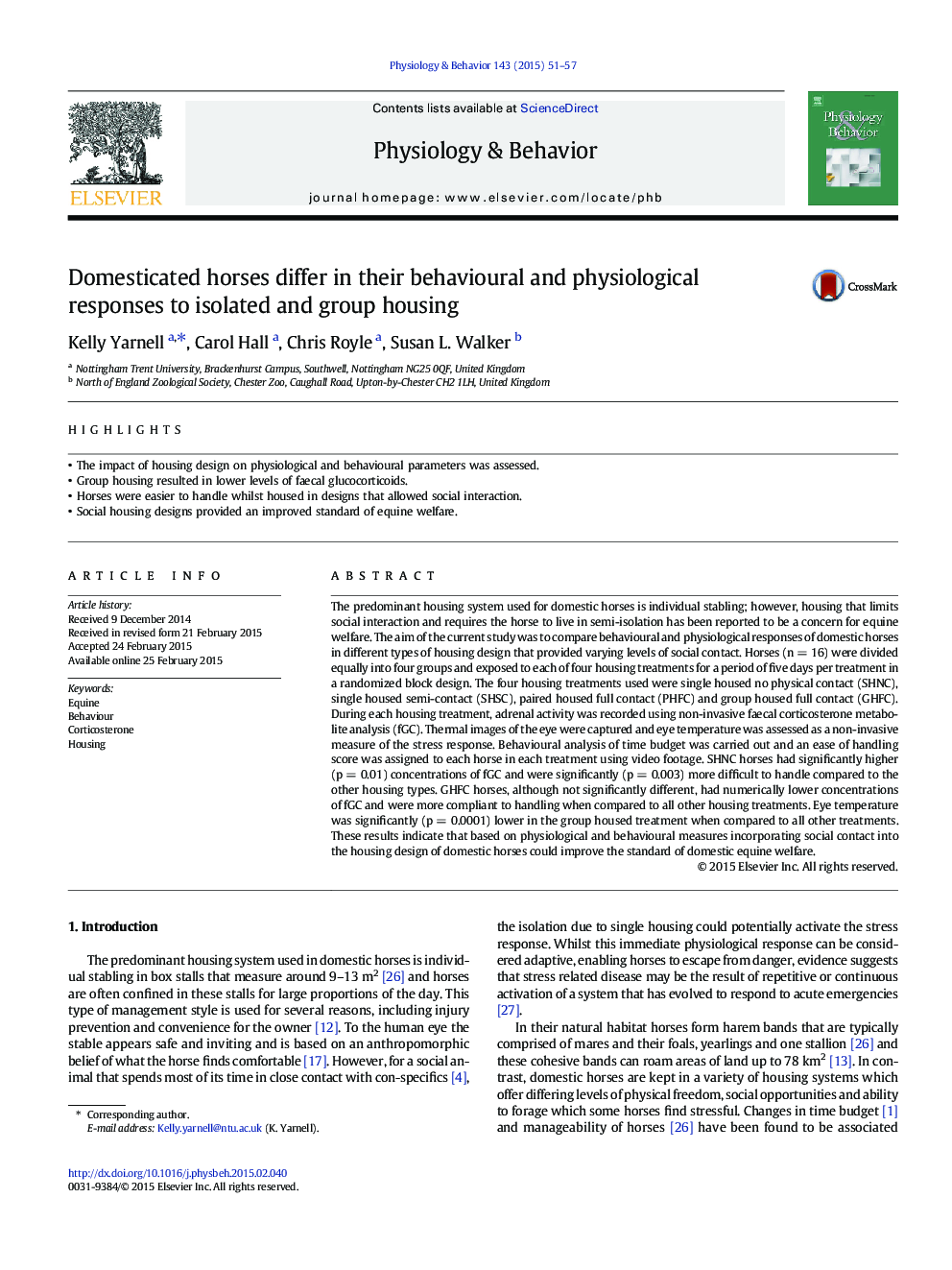| Article ID | Journal | Published Year | Pages | File Type |
|---|---|---|---|---|
| 5923709 | Physiology & Behavior | 2015 | 7 Pages |
â¢The impact of housing design on physiological and behavioural parameters was assessed.â¢Group housing resulted in lower levels of faecal glucocorticoids.â¢Horses were easier to handle whilst housed in designs that allowed social interaction.â¢Social housing designs provided an improved standard of equine welfare.
The predominant housing system used for domestic horses is individual stabling; however, housing that limits social interaction and requires the horse to live in semi-isolation has been reported to be a concern for equine welfare. The aim of the current study was to compare behavioural and physiological responses of domestic horses in different types of housing design that provided varying levels of social contact. Horses (n = 16) were divided equally into four groups and exposed to each of four housing treatments for a period of five days per treatment in a randomized block design. The four housing treatments used were single housed no physical contact (SHNC), single housed semi-contact (SHSC), paired housed full contact (PHFC) and group housed full contact (GHFC). During each housing treatment, adrenal activity was recorded using non-invasive faecal corticosterone metabolite analysis (fGC). Thermal images of the eye were captured and eye temperature was assessed as a non-invasive measure of the stress response. Behavioural analysis of time budget was carried out and an ease of handling score was assigned to each horse in each treatment using video footage. SHNC horses had significantly higher (p = 0.01) concentrations of fGC and were significantly (p = 0.003) more difficult to handle compared to the other housing types. GHFC horses, although not significantly different, had numerically lower concentrations of fGC and were more compliant to handling when compared to all other housing treatments. Eye temperature was significantly (p = 0.0001) lower in the group housed treatment when compared to all other treatments. These results indicate that based on physiological and behavioural measures incorporating social contact into the housing design of domestic horses could improve the standard of domestic equine welfare.
